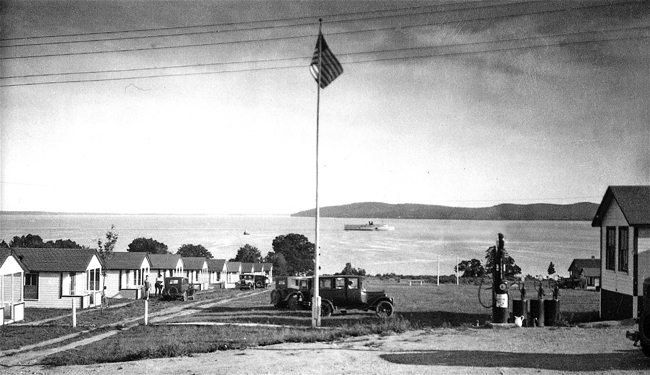B A C K T H E N
Belfast Tearoom and Camps
The Boston-Bangor steamer Camden or Belfast enters Belfast Harbor. The view is from the Penobscot Bay Tearoom and Camps, sprouting on what had recently been a hayfield along US Route 1, circa 1920. In 1917 Belfast’s Board of Trade promoted auto tourism with two hundred signs placed along Maine roads.
The northeastern shore of Belfast Harbor was then an open agricultural landscape, contrasting nicely with the compact brick-built city. The farmland with water views along Route 1 from Belfast to Searsport was ideally suited for the planting of camp grounds, and is today a motel strip development.
Kennebunkport author Kenneth Roberts, writing in the 1930s, had little regard for auto tourists or the changes they brought upon the land, including billboards, hot dog stands, and “unsightly nests of overnight camps that huddle in fields as though some debauched summer hotel, on the loose, had paused on a dark night and given birth to the result of a mesalliance with a sentry box.”
However, beauty—and reality—reflect the perspective of the beholder. An Internet reviewer rating a present-day nearby motel/camp colony praised the “view of the lake.”
The Penobscot Bay Tearoom and Camps fizzled out in the 1950s as the tastes of auto tourists changed. A number of the camps found new lives on the shores of area lakes and ponds.
Text by William H. Bunting from Maine On Glass. Published by Tilbury House Publishers, 12 Starr St., Thomaston, Maine. 800-582-1899.
Maine On Glass and prints of the photographs are available through the Penobscot Marine Museum: PenobscotMarineMuseum.org.

